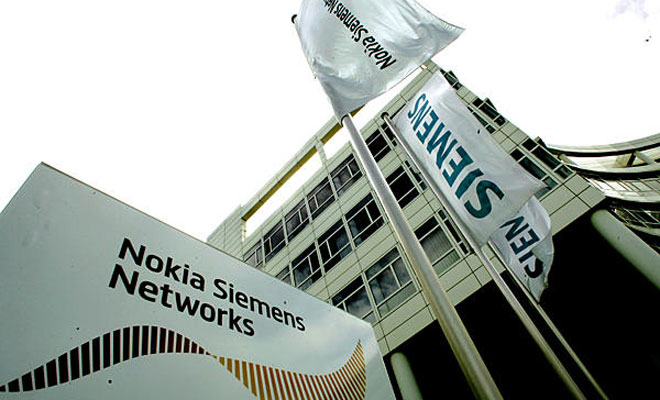Finnish mobile devices major Nokia will buy Siemens AG’s 50 percent stake in Nokia Siemens Networks, its telecom equipment joint venture, for $2.2 billion.
Nokia will use a bridge loan to help finance the purchase. The deal will end speculation that the phone major would seek to exit from the loss making Nokia Siemens Networks.
Nokia CEO Stephen Elop said the company had not considered synergies when deciding to buy Siemens’ stake in Nokia Siemens Networks and that the future of the network gear maker was open.
When asked if Nokia could sell or list the network gear maker, Elop told the conference call: “As for the future of NSN, as we’ve said consistently there is a range of options that could exist for NSN over time. All of those options remain open.”
Nokia Siemens Networks has posted 5 percent drop in Q1 2013 revenue to €2.804 billion from €2.947 billion in Q1 2012. Its operating margin in the second quarter of 2013 will be approximately positive 5 percent, plus or minus four percentage points.
Why Nokia wants to continue in telecom equipment biz?
Nokia Siemens is in the process of revamping its business. Its strong focus on mobile broadband business — that mainly cover 2G, 3G and 4G — is set to bring stable revenue streams in the long term.
For instance, the global LTE revenue was $2.7 billion in Q1 2013, up 21 percent quarter-over-quarter and 108 percent year-over-year, Infonetics said in a 20 June note.
But Nokia Siemens is not the only telecom vendor to benefit from the rapid growth of LTE. Ericsson is already leading the telecom equipment market, ahead of Nokia Siemens, Huawei, ZTE, Alcatel-Lucent, etc.
Chinese telecom equipment maker ZTE in 2012 reported positive cash flow as 4G business momentum started building across the world.
In wireless products, ZTE’s innovations in FDD-LTE solutions helped the company cement its partnerships with leading operators. In TD-LTE, ZTE won deals in India, the Middle East and Japan. In the wireline and optical network equipment segment, ZTE leveraged new technology development to maintain business growth, leveraging the opportunities in the rapid development of broadband and mobile internet.
ZTE, announcing the 2012 result, noted that the growth in mobile internet is driving investments in the optimization of 3G networks, and the deployment of 4G networks in 2013.
There’s lot of synergy between devices and telecom equipment businesses for Nokia. For Siemens, telecom equipment never made sense.
Like Nokia, Samsung, ZTE and Huawei are also trying to win more deals since they have presence in both telecom equipment and terminals businesses.
ZTE earlier said global market demand for smart devices will continue to grow strongly, as more users access the mobile internet to look for richer content and applications. To serve the changing needs of major telecommunications operators, it is key for providers to offer integrated solutions to maintain long-term partnerships.
Munich-based Siemens, which manufactures products from power turbines to high-speed trains, renewed efforts to sell its stake earlier this year, holding talks with buyout firms about a potential transaction, according to two people familiar with the talks.
In fact, Nokia and Siemens abandoned talks with private-equity buyers in 2011 over a sale of the business as the buyout firms failed to come up with a compelling offer. Nokia Siemens then started a program in late 2011 to cut 17,000 jobs, or about 23 percent of the total.
Though global several equipment makers want to focus on LTE, there’s a word of caution. Global mobile subscribers are forecast by Infonetics to reach 7 billion by 2017, with LTE subscribers making up just 8 percent of total subscribers.
Baburajan K
[email protected]






